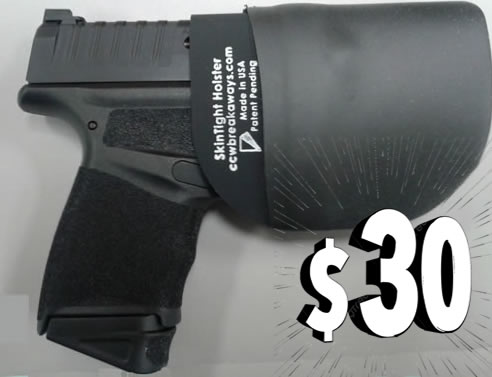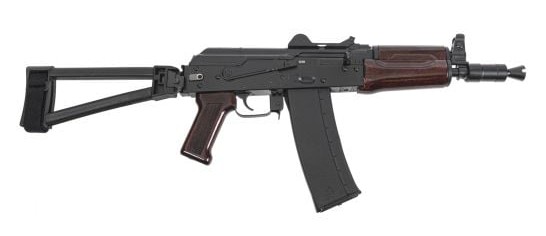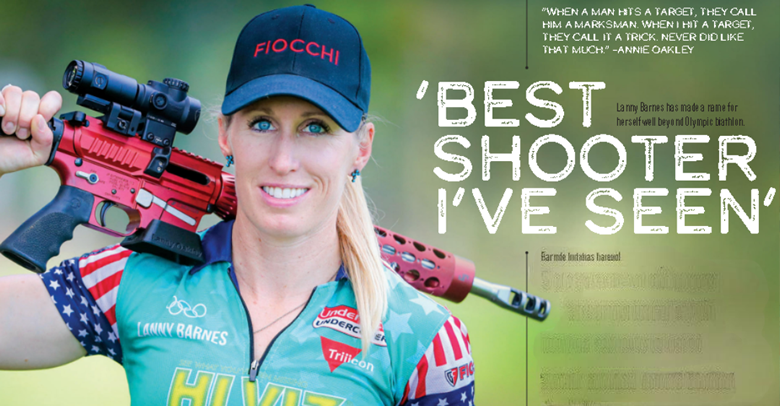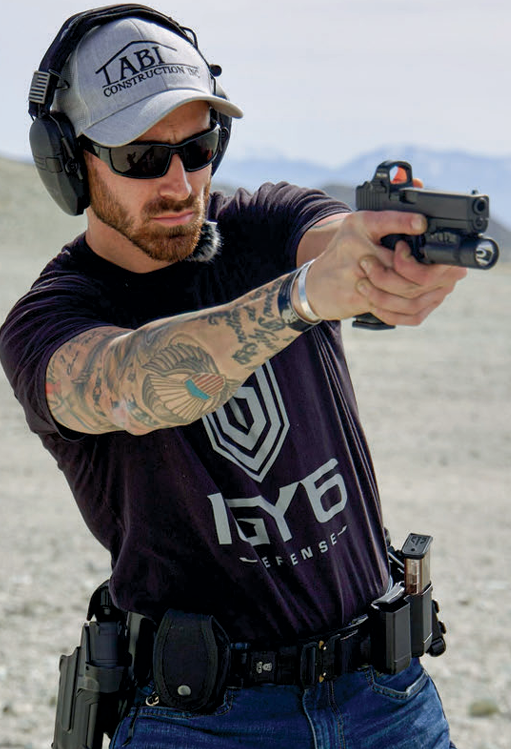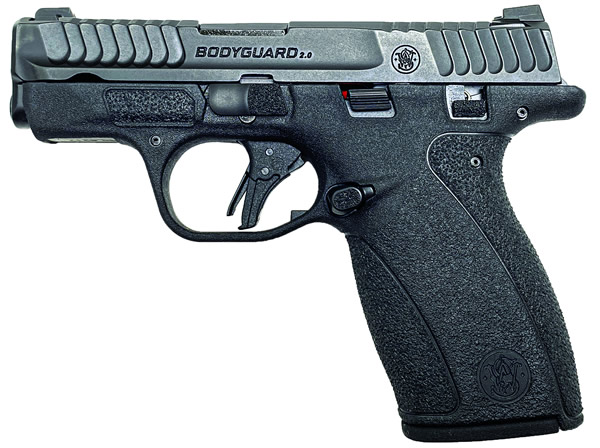
the Smith & Wesson Bodyguard 2.0 is a very controllable pistol.
Actual retail seems to be around $400.
Is this Micro-Compact Peak Pocket Perfection?
Story and Photos by Frank JardimFor good reason, micro-compact 9mm pistols with double-stack magazines holding 10 or more rounds have been all the rage for the last several years. That’s impressive firepower. When I learned in testing how accurate some 9mm micro-compacts were, I concluded it was time to retire my snub nose revolver as my everyday pocket carry self-defense gun. I replaced it with a Springfield Armory Hellcat loaded with 11+1 rounds of Hornady Critical Defense 9mm. I loved the Hellcat, but my wife did not. For her, the slide was still too hard to rack, the gun’s bulk was still hard to conceal on her small body and the 9mm recoil was too severe.


This is nothing new, but Smith & Wesson’s introduction of the M&P Bodyguard 2.0 – a .380 ACP micro-compact with a flush-fit, 10-shot, double-stack magazine capacity – was a game changer for both of us. Where the Hellcat was 18.5 ounces and measured 1 inch thick, 4 inches tall and 6 inches long with a 3-inch barrel, the Bodyguard 2.0 was 9.8 ounces empty, 0.75 inch thick, 4.1 inches tall and 5.5 inches long with a 2.75-inch barrel and significantly less recoil. The slide was still a little hard for her to rack, but it was smaller, lighter, easier to conceal and handle, and exceptionally accurate.
HOW ACCURATE WAS it? Shooting from the bench at 7 yards with a pistol rest, I tested three brands of premium .380 ACP self-defense ammo shooting a series of five-shot groups. Hornady’s polymer plugged 90-grain Critical Defense FTX JHP averaged 0.79 inch and 912 feet per second. Remington Ultimate Defense 102-grain coiled brass and bonded JHP averaged 0.96 inch and 833 fps. Finally, Winchester Train & Defend D 95-grain JHP averaged 1.05 inches and 804 fps. Recoil with a .380 ACP is fairly tame in general and particularly controllable in the Bodyguard 2.0, which encouraged me to try some rapid-fire drills to see just how quickly I could empty my magazine into the target. I timed 2.03 seconds on average with my best 10-shot group at 7 yards measuring 6.62 inches.

The level of accuracy displayed by the Bodyguard 2.0 would be acceptable for a full-size service pistol. S&W states in the instruction manual that their average accuracy for pistols with 3-inch-or-shorter barrels is 1.7 inches at 7 yards, 3.9 inches at 14 yards and 6.5 inches at 21 yards. My test pistol shot a great deal better. Exactly why it shot so well is likely a combination of factors like its excellent two-stage, crisp breaking, 5-pound trigger pull weight, quality ammunition and the pistol’s construction. During my disassembly and inspection of the pistol, I saw that the slide-to-frame fit was quite tight with no apparent wiggle, nor was it possible to noticeably move the muzzle in any direction when the pistol was in battery. In addition, when in battery the lateral movement of the breech within the slide’s ejection port was among the smallest I’ve ever seen.

The Bodyguard 2.0 has front and rear slide guide rails pinned into the polymer frame that span a distance of 3.5 inches, providing support for the slide over 67 percent of its overall length. The rails themselves are also comparatively long, measuring 1 inch in the front and 1.19 inches in the rear. Both of these rail sections, and the other visible firing components that are not sheet metal stampings, are metal injection molded, or MIM, parts. What I could inspect of the sear mechanism appeared well balanced and stable, which would tend to promote consistent operation and accuracy. Without an exploded parts diagram, I did not want to try disassembly beyond field stripping, so the design details of its interior parts remain mysterious. For safety reasons, most gun makers don’t want to encourage shooters to take apart the firing mechanisms of their pistols.

One engineering characteristic of the Bodyguard 2.0 that I thought potentially problematic is that its striker mechanism can’t be disassembled for cleaning without first removing the rear sight. Realistically, that means that most people who own this gun, me included, will never remove the striker. Instead, special care needs to be taken to keep the striker channel clean to ensure safe and reliable operation. I’ll be using a spray solvent to flush it clean. If you have a Lyman Power Pro 3L ultrasonic cleaner or similar unit, it would be ideal to thoroughly clean out any dirt, pocket lint, etc., from the striker channel.

keep this gun running reliably.
THE NEW MICRO-COMPACT .380 ACP, polymer-framed, striker-fired Bodyguard 2.0 may be the perfect pocket pistol. At first glance, it could be mistaken for a kid’s toy. The downside to all .380 ACP pistols is that they are .380 ACP pistols. The cartridge doesn’t pack the punch of 9mm, and its relatively low velocity doesn’t help hollow point bullets expand reliably in tissue. Accurate shot placement, rather than terminal performance engineered into the bullet itself, is likely to determine the extent of the damage done. Good thing the Bodyguard 2.0 is such a fast-shooting, accurate pistol. There’s a 12-round extended magazine that adds a little more front grip strap, but the 10-rounder is easier to conceal.

ambidextrous safety lever.
And, with the help of a deeply undercut trigger guard, my medium-sized hand has almost a full three-finger grip, which is more than I can get on most micro compact pistols. The grip surface has an effective molded-in stippling similar to 80-grit sandpaper on the front and backstraps with the middle portion less aggressively textured so as not to abrade the skin when carried. Textured trigger finger indexing pads are molded on the left and right of the frame to help keep your finger off the trigger until you’re ready to shoot. I found this pistol, which has an 18-degree grip angle, to be a perfect natural pointer in my hand, the barrel in exact alignment with my extended index finger.

grip angle made this pistol a natural pointer.
The 0.75-inch-thick slide looks disproportionately small for the grip frame and contributes to the pistol’s controllability in rapid fire. The bore axis is low, as is the reciprocating mass of the slide, which works to reduce muzzle flip. The grip is 0.88 inch thick, reaching a maximum thickness of 1.0 inch only across the magazine release button. People with small hands may just love this pistol, though those lacking finger strength might have some difficulty operating the controls with just their shooting hand. All the controls are steel. The button surfaces of the magazine release, takedown lever and ambidextrous manual thumb safety (an option I find highly desirable on a pocket pistol) are very aggressively textured.

inset in the front sight blade for fast sight
picture acquisition under stress.
The only one that might cause a problem for people with soft skin is the manual safety. Using it all day, I found it was actually filing down the callus on my thumb. That being said, the safety engages and disengages positively and the button’s aggressive texture should make it easy for just about everyone to swipe off with the inside of their thumb during the draw. The slide lock release has a grooved surface and there’s not much of it standing proud to get hold of.
If your hand strength is limited, expect to use the supporting hand to work it. By contrast, the magazine release button stands so proud that I accidentally dropped the magazine while shooting a rapid-fire string. After that embarrassing episode, I started using a high thumb grip and managed to keep the magazine in the gun. Left-handers can easily reverse the button to the right side of the frame. Personally, I wish it was about half as tall as it is.


Editor’s note: For more on S&W firearms, see smith-wesson.com.



